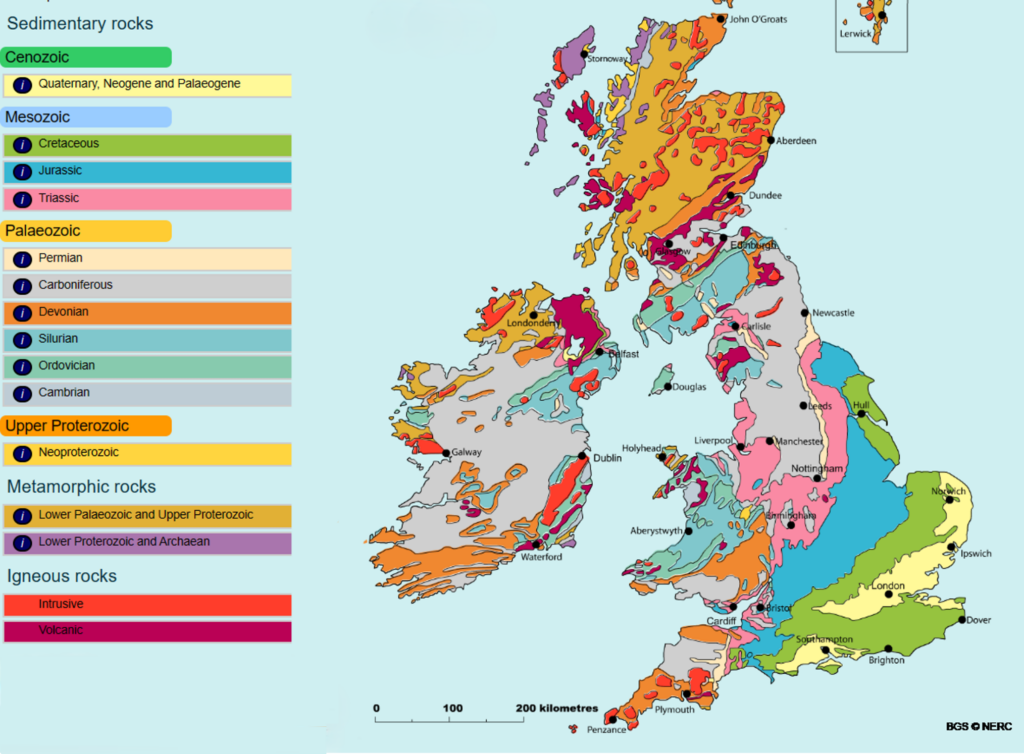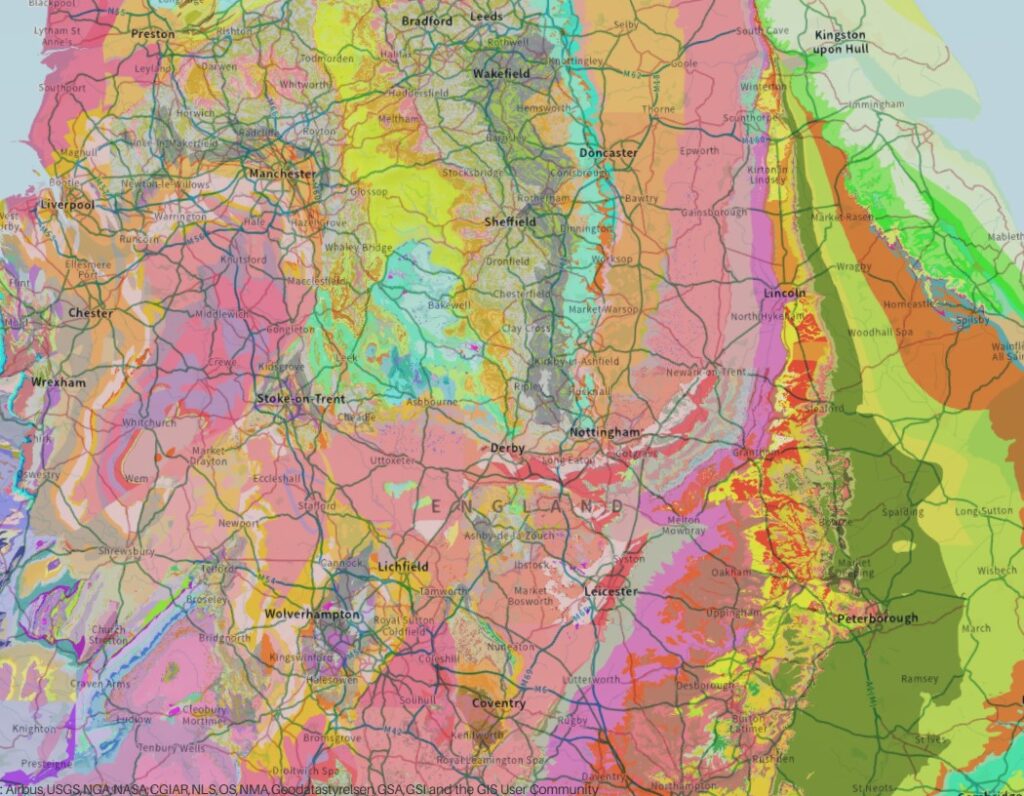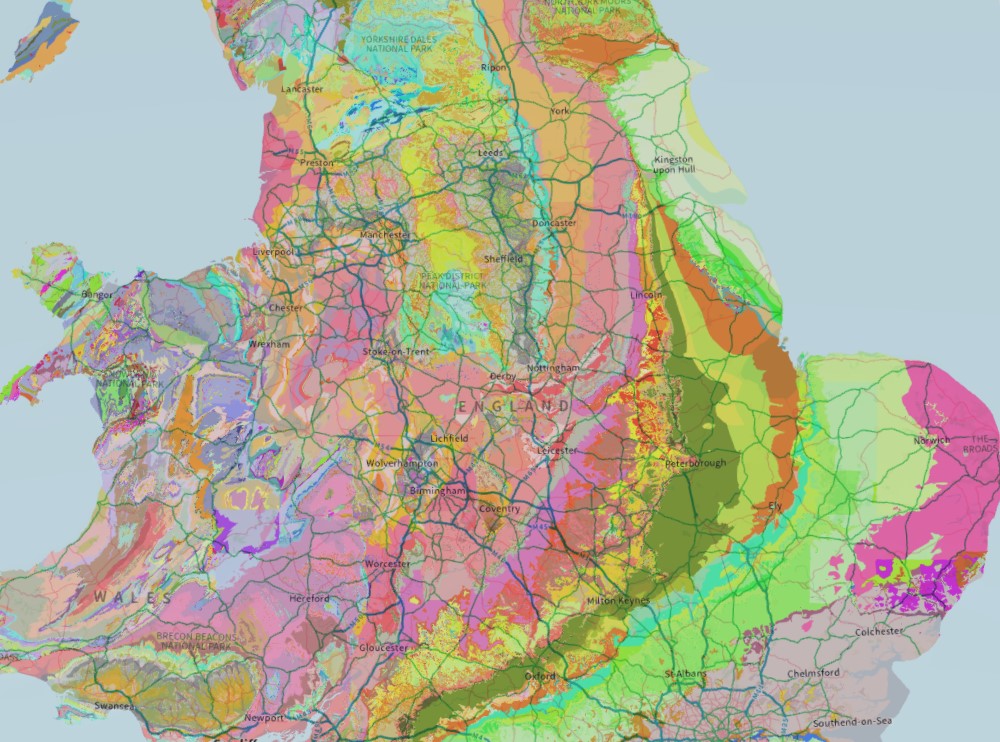Great Britain is renowned for its complex geological history which has produced an incredibly diverse range of rock types formed in a wide variety of settings.
The oldest rocks found in England, Scotland, and Wales are all around 2 billion years old. Ever since then the three countries have led rich and active geological lives, roaming around the planet, often in the thick of things, ‘collecting’ mementos along the way.
Over the last 500 million years parts of Britain have sunk to the bottom of the deepest oceans, risen to the top of the highest mountains, become buried and squashed down to depths of over 20km, and been plagued by volcanoes and lava flows. We have spent time under water in the southern hemisphere, lived in coral rich seas near the equator, and experienced harsh desert environments on our slow migration path northwards towards our current location.
On top of all that, we were the home and breeding ground to all manner of lifeforms, resulting in one of the most diverse and well-preserved fossil records on the planet.
All in all, a very impressive geological CV!
But the story doesn’t end there. Rock layers are typically deposited on top of each other, so the oldest are at the bottom with progressively younger rocks above. This was pretty much the case here in Britain, but in another fortuitous quirk of fate (at least for geologists and our mining heritage), this layer cake of rocks has subsequently been tilted on its side and sliced. The result is a near pristine cross-section of rocks that represent our full geological history. The oldest bottom layers are typically found in the north and west, and you can quite literally walk forwards through time the further south and east you go.
A summary of this geological laker-cake can be seen in the schematic representation below produced by the British Geological Survey. This clearly shows the location of rocks that formed during the different geological periods representing around 2 billion years of history.

British Geological Survey materials © UKRI 2024
In reality, the actual geology at regional and local levels is considerably more complex. The map below (again produced and courtesy of the British Geological Survey), shows the detailed geology across the centre of England & Wales. The different colours represent different rock types formed in different geological settings at different times.

British Geological Survey materials © UKRI 2024
This huge diversity of rock types across Britain, coupled with good accessibility either on the surface or at shallow levels, has given rise to a long and historically prosperous mining industry.
It is estimated that over 60 different materials have been mined across Britain since the bronze age, including metals, slate, iron ore, coal, evaporites, and fossil fuels. The mining of each material and commodity has evolved over time, driven in part by improved techniques and extraction methods but also by the need to access rocks at deeper levels.
Unfortunately, the outcome of nearly 2000 years of mining heritage is a landscape that is littered with recorded and unrecorded workings that present potential hazards to landowners and developers.
GRM has a wealth of experience and expertise in the mining sector, indeed it is something of a specialism given the background of the two founding Directors (see GRM History page). We continue to work with a range of clients from large commercial developments to private homeowners who use our expertise to identify both recorded and unrecorded mine workings, and, where found, implement solutions that allow their projects to reach completion.
We have therefore written a series of articles focusing on the mining sector, and the implications for landowners and developers. Each of the subsequent six articles will feature a different material that has been heavily mined. We will look at different mining locations, techniques that were used, and what remnants remain today. We will also explore some of the remediation strategies that can be deployed should mine workings be found on development sites.
Unsurprisingly, the first article will focus on our rich and diverse coal mining industry. In the same article we will also discuss fireclay, which is typically found in near to coal and mined in a similar way. Subsequent articles will feature other resources and techniques including ironstone, limestone, chalk, gypsum, and metals.
If you have any development or construction projects that may be impacted by historical mining workings and hazards, then please get in touch to find out how we can help save both time and costs. Please use your main point of contact at GRM or for new enquiries email richard.upton@grm-uk.com or call 01283 551249.


